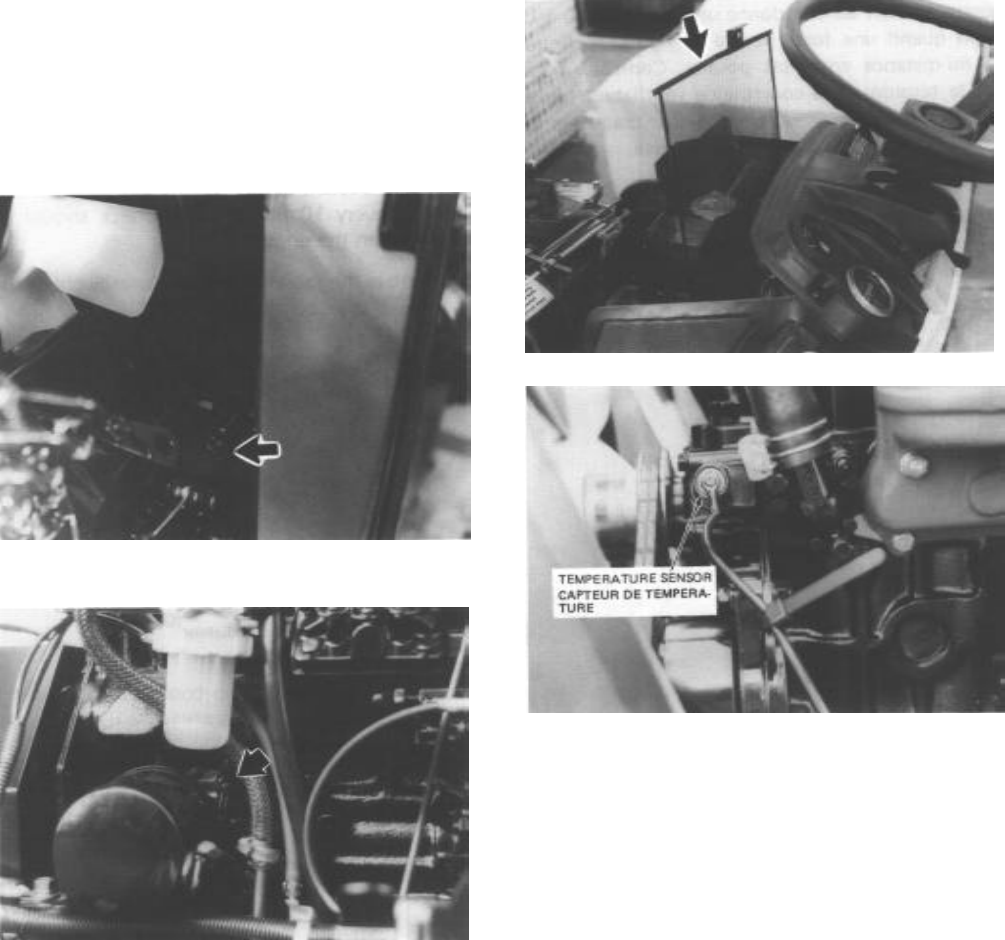
27
LUBRICATION AND MAINTENANCE
2. After the coolant has drained, place a water
hose in the radiator filler neck and run water
through the system with the engine running.
Make sure water is flowing from the block
drain valve before starting the engine. When
the water flowing from the drain valve is free
of discoloration and sediment, stop the engine
and remove the hose. Allow all water to drain
from the system through drain valves.
3. Close the two drain valves and slowly refill the
system with a 50/50 solution of permanent
antifreeze and clear water. Fill until the
coolant level is approximately 1 - 1/2 to 2
inches (3.8 to 5cm) below the bottom of the
filler neck. Do not fill beyond this level.
IMPORTANT: Bleed the cooling system to make
sure that no pocket remain.
4. Clean the radiator cap and cap seal. Install
the cap.
Figure 33 - Radiator Drain Valve
Figure 34 - Engine Block Drain Valve
5. Clean the radiator screen, Figure 35.
6. Run the engine until normal operating
temperature is reached, then stop the engine
and recheck the coolant level. Add coolant
as required.
IMPORTANT: Never run the engine when the
cooling system is empty, and do not add cold water
or cold antifreeze solution if the engine is hot.
Thermostat: The thermostat is located in the
coolant outlet connection in the rear of the cylinder
head, Figure 36.
Figure 35 - Radiator Screen
Figure 36 - Thermostat Housing
When the engine is cold, the thermostat, which is a
heat sensitive valve, shuts off the flow of coolant to
the radiator , thus allowing rapid engine warm up. A
recalculating bypass allows the coolant to circulate
within the engine whenever the thermostat shuts off
flow to the radiator.


















